Website Designed By
- SERVICES Links -
We'd Love to Hear About your Home and Business Projects!!





Contact us or call to find out how we can help.
JBailey.message@gmail.com
JBailey.message@gmail.com



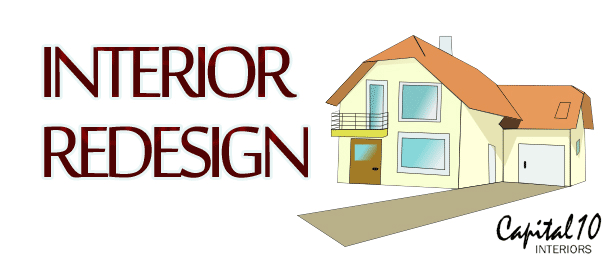




Choosing the Right Countertops
With Capital 10 Interiors
ABOUT KITCHENS
ABOUT US
ABOUT DESIGN


KITCHEN LINKS
Choosing Countertops
Building With Care and Consideration
When choosing a countertop, there are several things to keep in mind. Besides the cabinets, the counter-top is often the largest and most used surface in your kitchen. There are many options available for counter-tops and some factors in choosing a particular one are cost, appearance, maintenance and functionality. This page will go over the strengths and weaknesses of some of the most popular choices.
If you are working with a limited budget when remodeling your kitchen, laminate is a great option because it is the most cost effective choice for countertops. High pressure laminate is most commonly used on countertop surfaces. It is made up of three kinds of paper pressed together at between 1,000-2,000 pounds per square inch and at temperatures over 280 degrees for approximately one hour. The
Laminate
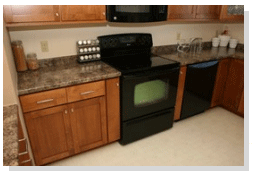
laminate is typically applied to a particle board substrate but sometimes certain codes may require a plywood substrate to be used. Because the laminate is applied to a substrate, if a chip occurs its not repairable.The laminate manufacturers have done a wonderful job replicating granite and stone in their color palates. There are different textures available offering a wide array of choices. New techniques allow for under-mounting stainless steel or acrylic sinks which makes laminate a more appealing selection. It will not support mold or bacteria growth but can scratch and cannot tolerate heat so using a trivet is necessary. Be aware that gloss finishes will show scratches more easily than matte finishes
Manufactured by DuPont, Corian paved the way in making solid surface a commonly used countertop in kitchens and bathrooms. Today there are many manufacturers of solid surface all offering a variety of color choices with a varying price range. Solid surface is a manufactured material consisting of 62%-65% natural mineral, 30%-35% acrylic binder, and 2% pigment. The color runs through the entire material, which makes it repairable. Stains can be removed with an abrasive pad and cleanser. Deeper scratches
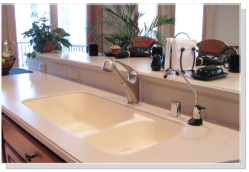
Solid Surface
can be removed with 320 to 400 grit sandpaper or steel wool. It is versatile with limitless design possibilities. Solid surface typically comes in ½” and ¾” thicknesses. Other thicknesses are available and vary by manufacturers. Unlike granite and quartz, the backsplash on a solid surface countertop can be coved and the seams are inconspicuous. Another appealing feature of solid surface is that the acrylic integrated sinks are molded in with the countertop. The availability of this type of sink may vary by company. Solid surface can be sanded to a matte finish or can be buffed or polished to a high gloss. It is not recommended to have a high gloss finish on dark colors or in heavy use areas. Solid surface is nonporous and easy to clean but is less able to withstand heat than granite.
Quartz is stronger than granite. 93% of this material consists of mined quartz. Acrylic or epoxy binders make up the remaining portion. These added resins provide flexibility to the quartz, which prevents chipping. The patterns are controlled and the colors are more uniform than granite. This saves homeowners from having to carefully choose slabs to assure they match. Manufacturers claim it is more stain-resistant than solid surface. Quartz is nonporous and does not require sealing. The slabs are 3/8” to 1 1/8” thick and 10 feet long. There are many manufacturers of Quartz and so there are a wide array color options available
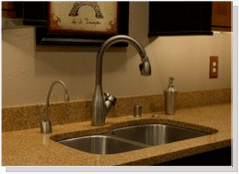
Quartz (Engineered Stone)

Granite
Granite is a very popular and beautiful countertop choice. It offers warmth and natural elegance to any style of kitchen. It is an igneous stone that starts out as the liquid magma in the center of
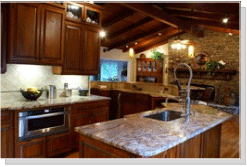
the earth. It is formed very dense with no pores due to the extreme pressure within the earth. Granite is made up of common minerals like quartz, mica and feldspar. The majority of it is feldspar which comprises 60% to 80% of the stone. It is heat and scratch resistant although it is still strongly recommended that you use a cutting board and trivet to protect it. Mineral content and veining vary from slab to slab so it is recommended that you choose the slab that will be used in your home. Granite is porous and will require periodic sealing and the seams are visible. The optimum thickness for granite countertops is 1 ¼”, but it is available in ¾” slabs also. Its durability makes it a great choice for high use kitchens.
Wood
Wood countertops create nature-inspired warmth in a kitchen. Often wood is used on an island or in an area of the kitchen where prep work is done. When used in a defined section of the

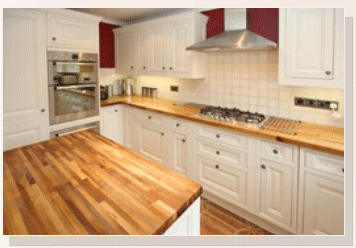
countertop, the top can come with a factory finish which includes a penetrating sealer and a non-toxic lacquer finish. The combination of sealer and varnish prevents moisture penetration. No oiling is neces-sary and the wood can be wiped clean with a damp cloth. Chopping on the wood when finished in this manner will not damage the finish. Us-ing unfinished wood is most desirable if the entire countertop will be wood. The reason for this is if fabrication of seams and miters must be done, prefinished tops would hinder proper adhesion of the seams. When
the top is unfinished, oiling must be done periodically, usually every four to six weeks, to prevent the wood from drying out. Some of the more popular woods used for counter-tops include Eastern Hard Rock Sugar Maple, Western Maple, and Western Alder. Eastern Hard Rock Sugar Maple is considered the hardest, thus cutting and scratching damage will be minimized.
Concrete
Concrete can be molded and colored to suit your space and taste. It is stain resistant if the appropriate sealer is used. Topical surface sealers tend to prevent staining better than penetrating sealers. The rougher appearance and imperfections of concrete make it appealing to many. Hairline cracks called crazing are normal and part of the look of concrete. It does tend to scratch and chip easily.
Stainless steel has long been a mainstay in commercial kitchens. With the growing popularity of contemporary style kitchens and stainless steel appliances, it is finding its way into the residential arena. It is heat and stain proof as well as non-corrosive but is susceptible to dents and scratches. It tends to need frequent cleaning as it shows fingerprints, smudges and water marks easily.
Stainless Steel
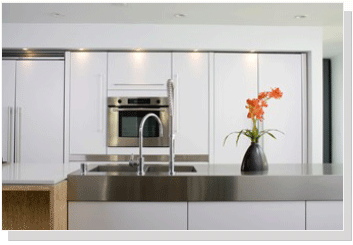
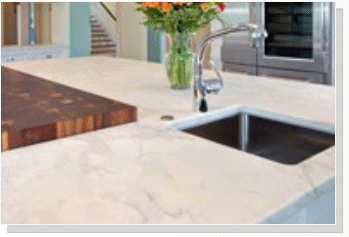
Marble and limestone start out as the same material. With added heat and pressure, limestone crystallizes and becomes marble. Italian marble is world renowned, but marble quarries are located in many countries, including the U.S. There is more variation in the colors and patterns of marble than in granite which gives it a softer appearance. Marble is not as hard as granite and so it is easily stained with liquids or oils. Sealing marble is very important. Most stains that marred unsealed marble wiped away with water on sealed samples.
Marble
Limestone’s popularity stems from the different characterizes in its patterns as well as its color variation which are mostly earthy tones. Due to its susceptibility to staining and etching, limestone is not a typical countertop material. It does, however, work well for bathroom surfaces, backsplashes and wears well enough to use on floors. It must be sealed frequently to help decrease its susceptibility to etching and staining. Limestone is the result
Limestone

of millions of years of seashells and bones of sea creatures settling as the sediment on the ocean floor. The calcium in the bones and shells combines with the carbon dioxide in the water to form calcium carbonate, which is the basic mineral structure of all limestone and marble. Less than 3% of the stone is the color, which is simply other natural elements present when the stone was formed. Given enough heat and pressure, lime-stone will crystallize, resulting in marble. Limestone that has not been crystallized will not be able to be polished and will be honed.
As you can see, there are many options when choosing countertop surfaces. Some things to consider when making your choice are how much time is spent cooking or baking, ease of cleaning and maintaining, and whether or not it creates the look you are after. It is quite popular to mix and match different surfaces in the same kitchen. This can help when planning your budget by making an area of countertop your focal point, such as using granite on an island and installing laminate in the other areas of the kitchen.

